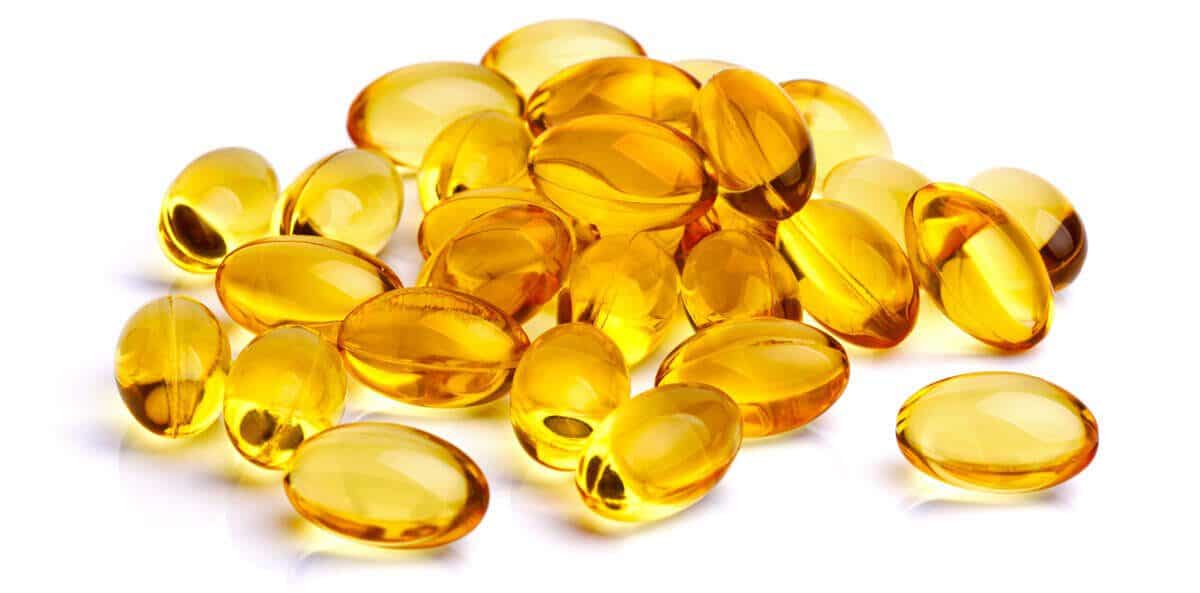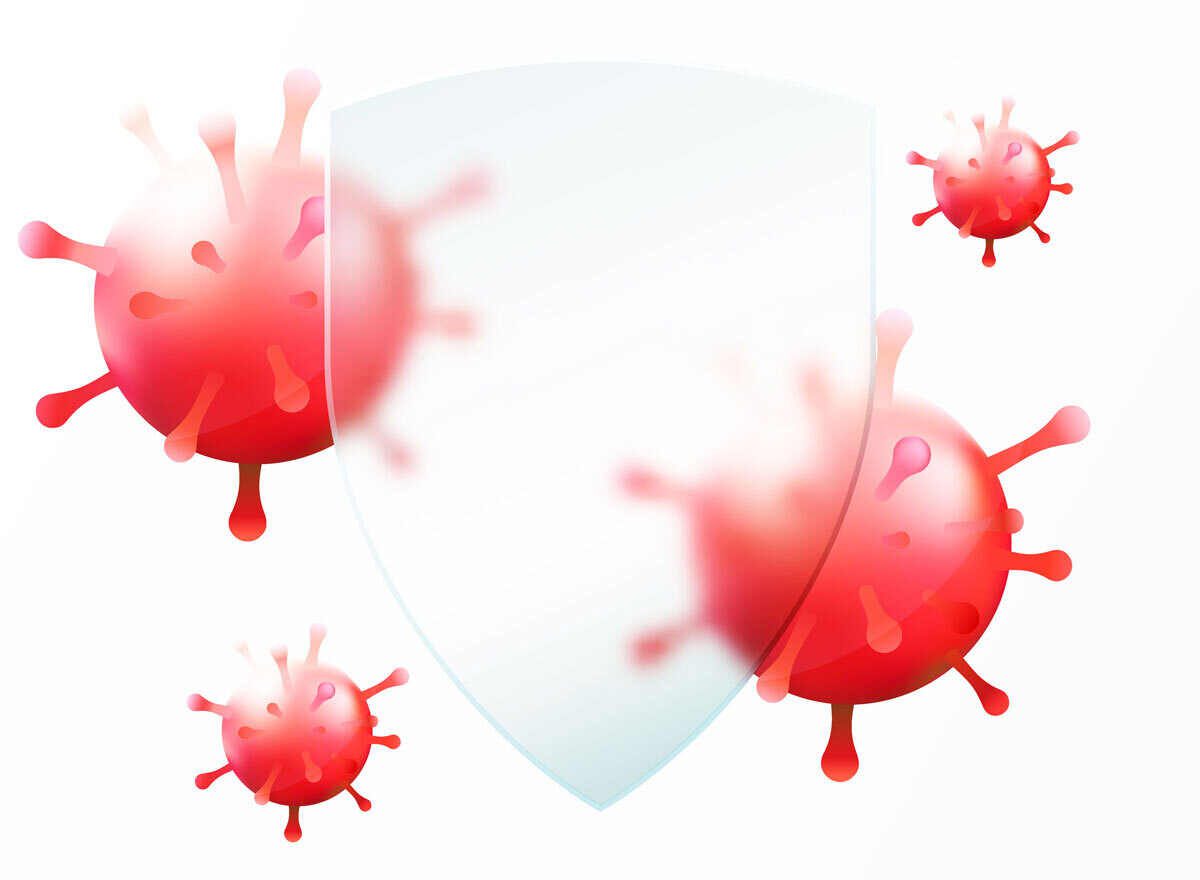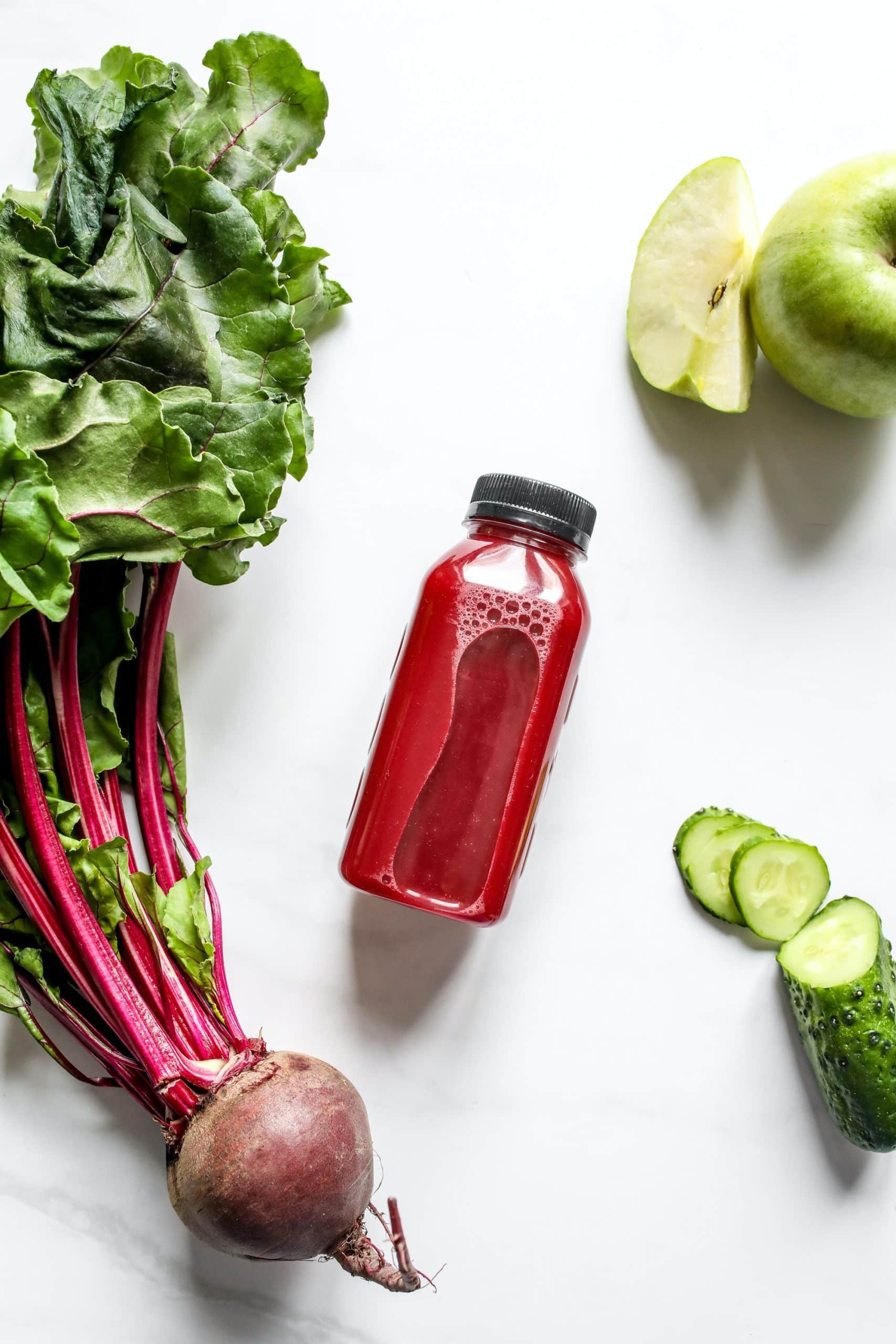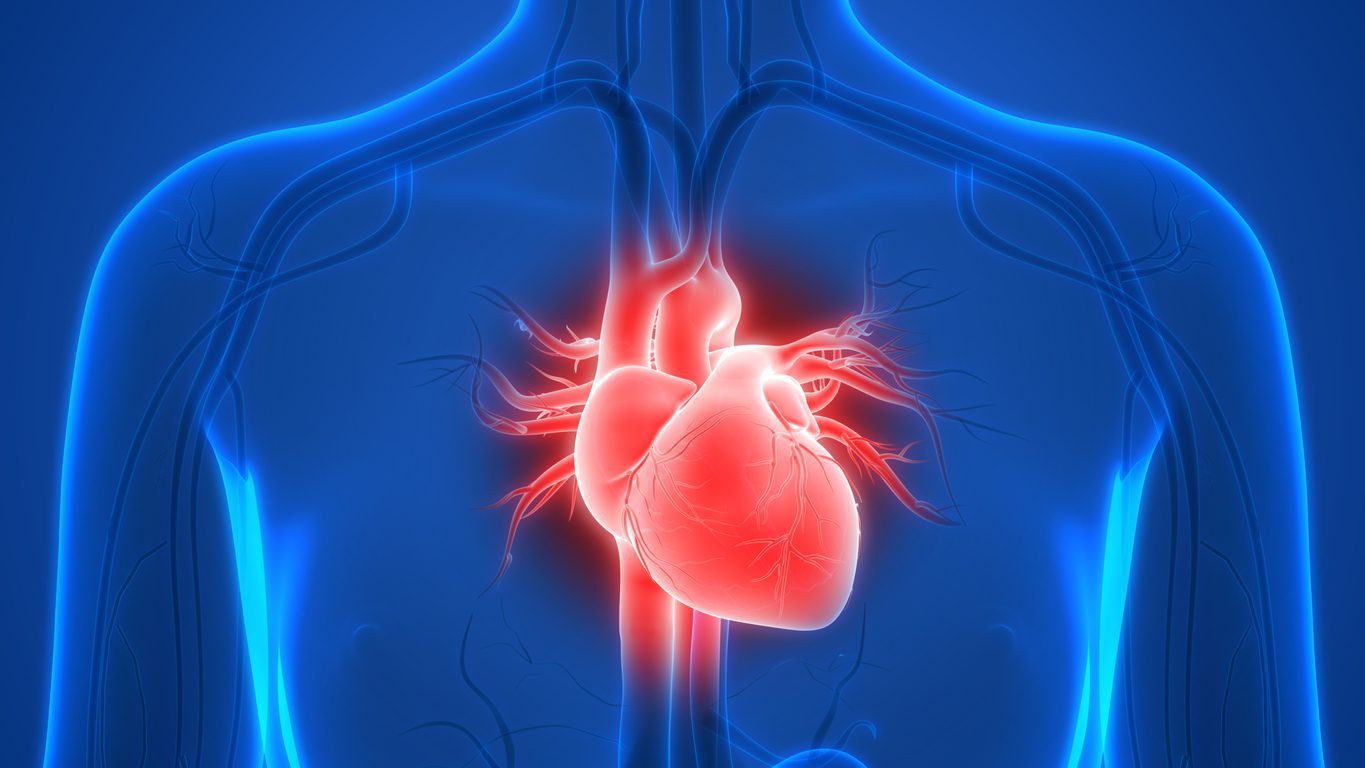Your cart is currently empty!
Category: Health and Wellness
-

TriVita's Ten Essentials for Health and Wellness
Wellness is a gift that we are called to steward. It’s not just the absence of disease or injury, it’s the balance of physical, emotional, and spiritual well-being. These 10 essential habits for health and wellness are intended to help you experience newfound health, energy and perspective to accomplish your life goals and purpose.
-

Human Molecular Genetics and Genomics — Important Advances
At a time when the world is gripped by the Covid-19 pandemic, early AIDS doctors look back on 40 years of HIV/AIDS. Many of them first encountered AIDS when they were in their early 30s, and their lives have been shaped to a large extent by that earlier pandemic.
Before a medicinal product can be placed on the market it requires a marketing authorisation or registration. In order for these to be granted, the pharmaceutical entrepreneurs have to submit the corresponding applications. Depending on the nature of the project, different types of applications for marketing authorisation are available. The following pages provide information regarding the respective requirements
This evidence must be based on a detailed scientific bibliography covering all relevant preclinical and clinical aspects of the medicinal product. For this reason, this form of application is also referred to as a “bibliographical application”.
In addition to the content, the nature of the literature sources is also decisive, as the submitted literature must be freely available in the public domain and published by a reputable source. Therefore, data from own preclinical and clinical trials may not be taken into account in the discussion of a bibliographic application
-

Conquering Atherosclerotic Cardiovascular Disease
At a time when the world is gripped by the Covid-19 pandemic, early AIDS doctors look back on 40 years of HIV/AIDS. Many of them first encountered AIDS when they were in their early 30s, and their lives have been shaped to a large extent by that earlier pandemic.
Before a medicinal product can be placed on the market it requires a marketing authorisation or registration. In order for these to be granted, the pharmaceutical entrepreneurs have to submit the corresponding applications. Depending on the nature of the project, different types of applications for marketing authorisation are available. The following pages provide information regarding the respective requirements
This evidence must be based on a detailed scientific bibliography covering all relevant preclinical and clinical aspects of the medicinal product. For this reason, this form of application is also referred to as a “bibliographical application”.
In addition to the content, the nature of the literature sources is also decisive, as the submitted literature must be freely available in the public domain and published by a reputable source. Therefore, data from own preclinical and clinical trials may not be taken into account in the discussion of a bibliographic application
-

Will Counting Calories Help You Reach Your Weight Goal?
The best Organic Food blogs from thousands of top Organic food blogs in our index using search and social metrics. We’ve carefully selected these websites because they are actively working to educate, inspire, and empower their readers with frequent updates and high-quality information.
Donec vitae hendrerit arcu, sit amet faucibus nisl. Cras pretium arcu ex. Aenean posuere libero eu augue condimentum rhoncus. Praesent ornare tortor ac ante egestas hendrerit. Aliquam et metus pharetra, bibendum massa nec, fermentum odio. Nunc id leo ultrices, mollis ligula in, finibus tortor. Mauris eu dui ut lectus fermentum eleifend. Pellentesque faucibus sem ante, non malesuada odio varius nec. Suspendisse potenti.
Suspendisse turpis ipsum, tempus in nulla eu, posuere pharetra nibh. In dignissim vitae lorem non mollis. Praesent pretium tellus in tortor viverra condimentum. Nullam dignissim facilisis nisl, accumsan placerat justo ultricies vel. Vivamus finibus mi a neque pretium, ut convallis dui lacinia. Morbi a rutrum velit. Curabitur sagittis quam quis consectetur mattis. Aenean sit amet quam vel turpis interdum sagittis et eget neque. Nunc ante quam, luctus et neque a, interdum iaculis metus. Aliquam vel ante mattis, placerat orci id, vehicula quam. Suspendisse quis eros cursus, viverra urna sed, commodo mauris. Cras diam arcu, fringilla a sem condimentum, viverra facilisis nunc. Curabitur vitae orci id nulla maximus maximus. Nunc pulvinar sollicitudin molestie.
Maecenas vel nulla eleifend, euismod magna sed, tristique velit. Nam sed eleifend dui, eu eleifend leo. Mauris ornare eros quis placerat mollis. Duis ornare euismod risus at dictum. Proin at porttitor metus. Nunc luctus nisl suscipit, hendrerit ligula non, mattis dolor.
Koan Conella
Creative Copywriter -

10 Foods To Help You Detox Naturally Today
The best Organic Food blogs from thousands of top Organic food blogs in our index using search and social metrics. We’ve carefully selected these websites because they are actively working to educate, inspire, and empower their readers with frequent updates and high-quality information.
Donec vitae hendrerit arcu, sit amet faucibus nisl. Cras pretium arcu ex. Aenean posuere libero eu augue condimentum rhoncus. Praesent ornare tortor ac ante egestas hendrerit. Aliquam et metus pharetra, bibendum massa nec, fermentum odio. Nunc id leo ultrices, mollis ligula in, finibus tortor. Mauris eu dui ut lectus fermentum eleifend. Pellentesque faucibus sem ante, non malesuada odio varius nec. Suspendisse potenti.
Suspendisse turpis ipsum, tempus in nulla eu, posuere pharetra nibh. In dignissim vitae lorem non mollis. Praesent pretium tellus in tortor viverra condimentum. Nullam dignissim facilisis nisl, accumsan placerat justo ultricies vel. Vivamus finibus mi a neque pretium, ut convallis dui lacinia. Morbi a rutrum velit. Curabitur sagittis quam quis consectetur mattis. Aenean sit amet quam vel turpis interdum sagittis et eget neque. Nunc ante quam, luctus et neque a, interdum iaculis metus.
Aliquam vel ante mattis, placerat orci id, vehicula quam. Suspendisse quis eros cursus, viverra urna sed, commodo mauris. Cras diam arcu, fringilla a sem condimentum, viverra facilisis nunc. Curabitur vitae orci id nulla maximus maximus. Nunc pulvinar sollicitudin molestie.
Maecenas vel nulla eleifend, euismod magna sed, tristique velit. Nam sed eleifend dui, eu eleifend leo. Mauris ornare eros quis placerat mollis. Duis ornare euismod risus at dictum. Proin at porttitor metus. Nunc luctus nisl suscipit, hendrerit ligula non, mattis dolor.
Koan Conella
Creative Copywriter -

A Brief Guide To The Raw Food Diet This Week
The best Organic Food blogs from thousands of top Organic food blogs in our index using search and social metrics. We’ve carefully selected these websites because they are actively working to educate, inspire, and empower their readers with frequent updates and high-quality information.
Donec vitae hendrerit arcu, sit amet faucibus nisl. Cras pretium arcu ex. Aenean posuere libero eu augue condimentum rhoncus. Praesent ornare tortor ac ante egestas hendrerit. Aliquam et metus pharetra, bibendum massa nec, fermentum odio. Nunc id leo ultrices, mollis ligula in, finibus tortor. Mauris eu dui ut lectus fermentum eleifend. Pellentesque faucibus sem ante, non malesuada odio varius nec. Suspendisse potenti.
Suspendisse turpis ipsum, tempus in nulla eu, posuere pharetra nibh. In dignissim vitae lorem non mollis. Praesent pretium tellus in tortor viverra condimentum. Nullam dignissim facilisis nisl, accumsan placerat justo ultricies vel. Vivamus finibus mi a neque pretium, ut convallis dui lacinia. Morbi a rutrum velit. Curabitur sagittis quam quis consectetur mattis. Aenean sit amet quam vel turpis interdum sagittis et eget neque. Nunc ante quam, luctus et neque a, interdum iaculis metus. Aliquam vel ante mattis, placerat orci id, vehicula quam. Suspendisse quis eros cursus, viverra urna sed, commodo mauris. Cras diam arcu, fringilla a sem condimentum, viverra facilisis nunc. Curabitur vitae orci id nulla maximus maximus. Nunc pulvinar sollicitudin molestie.
Maecenas vel nulla eleifend, euismod magna sed, tristique velit. Nam sed eleifend dui, eu eleifend leo. Mauris ornare eros quis placerat mollis. Duis ornare euismod risus at dictum. Proin at porttitor metus. Nunc luctus nisl suscipit, hendrerit ligula non, mattis dolor.
Koan Conella
Creative Copywriter -

The Importance of Fruits and Vegetables
There are many reasons we do not get enough quality fruits and vegetables in our diets. Some simply do not like the taste, others have difficulty digesting them and many people are too busy and find themselves grabbing quick and easy go-to processed foods. In addition to not eating enough fruits and vegetables, poor farming practices, overcooking foods and prolonged shelf time can diminish available nutrients in the fruits and vegetables consumed. Whatever the reasons we don’t consume enough quality fruits and vegetables, we all know we need the nutrients fruits and vegetables provide for not only a long life but maintain quality of life.
The benefits of consuming fruits and vegetables come with such as essential and non-essential vitamins, minerals, antioxidants, fiber, enzymes, phytochemicals, and natural detoxifiers that highly processed foods simply do not provide at the same level.
Nutrients
Macronutrients are nutrients our bodies need a lot of such as carbohydrates, fats, fiber, proteins, and water. Micronutrients are nutrients we need very small amounts of such as trace minerals. Nutrients are either nonessential or essential. Nonessential nutrients and are made by the body. Essential nutrients are not made by the body, therefore, must be obtained through eating foods. Phytochemicals typically identified by the color of food are not classified as nutrients but the early evidence is suggesting that they are equally beneficial for health.
Vitamins
Vitamins are either fat-soluble such as A, D, E, and K or water-soluble such as B and C vitamins. Fat-soluble vitamins stay in the body for longer periods allowing the body to build reserves while water-soluble vitamins are not stored in the body and are excreted through the urine. While the body can make some vitamins, it should be noted that most of the vitamins come through the consumption of food.
Minerals
There are 15 minerals and 7 of them are essential minerals including 7 macro minerals calcium, phosphorus, magnesium, sodium, potassium, chloride, and sulfur. Additionally, 8 trace minerals are consisting of iron, manganese, copper, iodine, zinc, cobalt, fluoride, and selenium. Minerals do not produce energy but rather support the metabolic process for energy. The benefits of minerals are wide and diverse. They influence everything from strong bones, nerve impulses, hormones, heart rate, immunity, and muscle tension just to name a few.
Antioxidants
These super nutrients slow the oxidation of cells. As cells become oxidized they become less efficient. It is vitally important to get enough antioxidants in the diet because every part of your body is made of cells and the body depends on cellular health. Antioxidants come from plants. The antioxidants plants produce to protect them from oxidation. When we eat antioxidant-rich plants we take on the anti-oxidation benefits of the plants. What was good for the plant cells is equally as effective for our human cells. Maintaining cellular health is the key to effectively getting good stuff into the cells of the body and bad stuff out of the cells of the body. If cells are prematurely oxidized know as oxidative stress then cells, proteins, and DNA can become damaged leading to serious medical conditions.
Fiber
When we do not get enough fiber we can end up with digestive discomfort and constipation. While no one wants the discomfort a lack of fiber causes, it is only the tip of the iceberg when it comes to other potential complications. Soluble fiber dissolves in water which creates a gel that thickens and slows the movement of chime in the small intestine slowing the absorption of glucose into the blood. Insoluble fiber does not dissolve in water and as it enters the large intestine stimulates peristalsis or in other words, moves food waste for disposal. Insoluble fiber also serves as food for healthy microbes in your gut. Without fiber, we cannot support the healthy microbes required for a robust immune system.
Enzymes
While enzymes are not on the list of nutrients on food packages, they are found in all living things including the food we eat and the bodies we occupy. Have you ever wondered why processed food can last for years on a shelf? Well, it’s because the processing of the food has damaged the cell walls of the food and destroyed all the enzymes. When cells are broken, they leak out enzymes which break down the material. As an example, if an apple is dropped on the ground it will develop a bruise which is caused by the breaking of cell membranes which allows the enzymes to leak out which breaks down the material. This is why it is so important to chew your food thoroughly. If the enzymes found in the foods are not present then when consumed the enzymes of the consumer of the food need to do the work.
Phytochemicals
The colors of fruits and vegetables are more than a way to create interest on a plate. The colors in plants are known as phytonutrients which contain powerful antioxidants and other health-promoting properties which may prevent disease and enhance the way our bodies work. When purchasing your food choose darker varieties as these have the most phytonutrients in them. Even when choosing the same food such as red pepper, choose the darker of the peppers available. There are more than 25,000 phytonutrients. A few honorable mentions are carotenoids (orange-yellow) rich in beta carotene great for eye health, lycopene (red-pink) which is great for urinary tract health, lutein (green) great for the blood, and flavonoids (Blue purple) for brain health.
Detoxifiers
Fruits and vegetables are not only full of nutrition they also serve as the resources for lymphatic and digestive action which is like the department of sanitation to the city you live in. Much like a city needs adequate resources to maintain a healthy community so does the human body. Just like a city, you too need a sanitation department equipped with the best resources and systems for effective elimination. Without proper sanitation, a community or the body can become toxic, inefficient, and ultimately sick. Some excellent detoxifiers consist of milk thistle for the liver which serves as the main filter of the body, cilantro for harmful microbe control which can compete with healthy microbes and turmeric for thinning thick viscous blood so the blood can bring fresh new blood throughout the arteries and remove waste through the veins.
In Summary
Over time, nutrient deficiencies can lead to serious systemic issues affecting all the systems of the body and corresponding organs resulting in diminished functions in the body. While I cannot say you will never get diseases as a result of eating a healthy diet, I can say you can significantly diminish your chances of getting diseases by eating enough fruits and vegetables. I can also say that if you have a disease that is being treated by a licensed healthcare professional that eating more fruits and vegetables will enhance the treatments you are receiving. While diet alone is not enough, neither is modern medicine. A combination of diet, exercise, and stress management along with medicine as needed is recommended to live a life of greater health and quality of life. As discussed in the opening of this article it can be difficult to get enough fruits and vegetables every day and even when we do eat enough of them the nutrient density might not be there due to modern food processes. For many, a super greens supplement may be needed to ensure enough of the vital nutrients required for living a healthier life. When looking for a super green supplement look for not only the greens but also other colors such as reds, yellows, oranges, and blues. I would also recommend a supplement with additional nutrients mentioned in this article.
-

Power To The Plants!
The super health benefits of plant-based nutrients
Plant-based nutrition has become a popular term in the health and wellness universe as more people adopt a green, natural way of living. In fact, one survey found more than half of Americans were open to eating more plant-based foods, but they don’t know what to buy. Whether you consume a completely plant-based diet, or want to adopt a healthier lifestyle by adding in products that are “more green” and high in plant-based nutrients, we’re examining the latest research in plant-based nutrition and how it benefits the body in a myriad of ways. We’ll even tell you where you can get all these nutrients (hint: you can get it in one scoop a day).
When looking for products that support your health and wellness journey, having the information to fuel smart nutrient choices can help ensure you’re on the right track for your health and well-being. Consuming ingredients that benefit all nine body systems and contain an adequate amount of vitamins and antioxidants can have a lasting positive impact on the body—even as we age. First things first, let’s break down plant-based ingredients that can help you either get on track or stay on the right path, to good nutrition and smart health choices for various areas
Whole Food and Prebiotic Blend
Barley (Hordeum vulgare L.) is an important cereal crop and has the highest dietary fiber content. Barley grass powder provides nutrition value as it has been found to eliminate toxins from cells in humans. Its functional ingredients have played an important role as a health benefit. Wheatgrass provides an excellent source of vitamins and minerals, as its high in vitamins A, C, and E, as well as iron, magnesium, calcium, and amino acids. Inulin is a type of fiber and is found in many fruits and vegetables, such as bananas, asparagus, and chicory root. Alfalfa is a plant that is particularly high in vitamin K. Spirulina algae is often referred to as blue-green algae and is loaded with nutrients. It was even proposed by NASA to grow in space for astronauts. Chorella is another type of algae that’s packed with vitamins and minerals, namely omega-3, fiber, antioxidants, and protein.
Antioxidant Blend
Speaking of antioxidants, they’re important for the body as they scavenge free radicals from the body cells and prevent or reduce the damage done by oxidation. Pomegranate, acai, moringa, beetroot, raspberry, rose hips, pineapple and goji berry are all bountiful in antioxidants. Fruits, such as berries and pomegranates, are rich sources of a variety of dietary bioactive compounds, especially the polyphenolic flavonoids that have been associated with antioxidant and anti-inflammatory effects. In addition, pomegranates, also classified as berry fruits, have been shown to confer antioxidant and anti-inflammatory effects.
Adaptogenic Herb Blend
Adaptogenic herbs work to counteract stress in the body with their stimulant properties. Studies on animals have revealed adaptogens exhibit neuroprotective, anti-fatigue, and antidepressive properties. Specifically, studies have shown ashwagandha as a multipurpose herb as it has anti-inflammatory, neuroprotective, adaptogenic, memory-enhancing, and sleep-inducing properties. Other adaptogenic herbs include maca and bacopa monnieri.
Essential Fatty Acids (EFA) Fiber Blend
Omega 3 and omega 6 are types of EFA, and the three main types of omega 3s include ALA, EPA, and DHA. Flaxseeds are abundant in omega 3s, which are good for the heart. The common sunflower seed supplies an abundance of nutritious components and is high in omega 6, as well as protein, unsaturated fats, fiber, vitamins (especially E), selenium, copper, zinc, folate, iron, and more.
Metabolism Blend
An active metabolism helps your body burn food into energy and fuel. It raises and lowers your appetite based on how active you are, and what foods you consume. Green coffee beans, ginger root, green tea, white tea, matcha green tea, and black tea have all been shown to influence and boost metabolism. Tea also has strong antioxidant properties, which gives it additional health benefits.
Immunity Boosting Blend
Your immune system is your best defense against sickness and foreign invaders in the body, and herbs and mushrooms have been shown to have an immune-boosting effect. Echinacea Angustifolia is a type of flowering plant that has been found to have modulating effects on immune function. In vitro and in vivo studies have suggested some immune-stimulating effects of astragalus, another flowering plant, which is a popular herb in Chinese medicine. Reishi is a type of mushroom and has also been shown to have beneficial effects on the immune system, with one study finding it can relatively improve immune functions that are usually depressed by chemo/radiotherapy.
Veggie Blend
Vegetables carry numerous vitamins and minerals and are important in a daily diet. Tomatoes, for instance, carry the antioxidant lycopene and are a source of vitamin C, potassium, folate, and vitamin K. Cauliflower is high in fiber and B vitamins, as well as phytonutrients and antioxidants. These veggies offer numerous benefits and adequate sustenance to keep the body fueled for daily activities.
Detox Support Blend
Milk thistle, with a distinctive purple flower and white veins, said to be caused by the milk of the Virgin Mary, exhibits a detoxifying effect. Its active ingredient silymarin has been shown to protect the liver. Another ingredient good for detoxing is cilantro, which can help support the body’s natural detox pathways, especially when it comes to heavy metals such as mercury. Turmeric root exhibits many health benefits, as its active ingredient curcumin has been shown to have anti-inflammatory properties.
Digestive Enzyme and Probiotic Blend
The digestive system is one of the most important systems, as it not only makes sure that our food is being digested properly, but 70 percent of the immune system lies in the gut. Lactobacillus acidophilus is a form of probiotic that produces lactic acid, which is beneficial for the gut as it makes up the healthy bacteria that live there. It can even help increase other amounts of healthy bacteria in the gut, which your body needs to function properly. In addition to probiotics for the digestive system, enzymes are also important. The three main enzymes are amylase, protease, and lipase and are necessary to turn food into nutrients for the body.
All of these nutrients are chock-full in our latest Super Greens Plus, a premium, and convenient supplement product. You want to eat well so you feel well. Getting all of these nutrients in a daily diet, especially if you can’t eat as much food as you once could, is important. Ingesting a superfood blend of healthy nutrients has become essential to modern-day living, so we can continue to live our lives to the fullest.
References:
https://www.earthday.org/foodprintsreport/
https://www.ncbi.nlm.nih.gov/pmc/articles/PMC5904770/
https://ntrs.nasa.gov/citations/19890016190
https://www.ncbi.nlm.nih.gov/pmc/articles/PMC5788027/
https://www.ncbi.nlm.nih.gov/pmc/articles/PMC3991026/
https://www.ncbi.nlm.nih.gov/pmc/articles/PMC6979308/
https://www.ncbi.nlm.nih.gov/pmc/articles/PMC5622016/
https://www.ncbi.nlm.nih.gov/pmc/articles/PMC3908530/
https://link.springer.com/article/10.1007/s00394-017-1542-8
https://journals.humankinetics.com/view/journals/ijsnem/28/5/article-p536.xml
https://www.ncbi.nlm.nih.gov/pmc/articles/PMC3408800/
https://pubmed.ncbi.nlm.nih.gov/19409077/
https://www.ncbi.nlm.nih.gov/pmc/articles/PMC6680489/
https://www.ncbi.nlm.nih.gov/pmc/articles/PMC2362099/
https://journals.sagepub.com/doi/pdf/10.1177/1534735403256419
https://www.ncbi.nlm.nih.gov/pmc/articles/PMC6353236/
https://www.ncbi.nlm.nih.gov/pmc/articles/PMC3414726/
https://www.ncbi.nlm.nih.gov/pmc/articles/PMC4303853/
https://www.ncbi.nlm.nih.gov/pmc/articles/PMC3654245/
-

Latest Study Indicates Low Omega-3 Index Linked to Premature Death
Omega-3 fatty acids are essential and required for human life. While many know the importance of omega fatty acids as part of a healthy lifestyle, it hasn’t been clear how low amounts of fatty acids in the blood are also linked to all types of death including heart disease and cancer until now. A recent analysis1 consisting of 17 perspective studies consisting of more than 40,000 participants over a 16-year span has shown a 15-18% lowered risk of all causes of death based on higher polyunsaturated acids (PUFAs) in the blood.
While the analysis does not show how polyunsaturated acids (PUFAs) were consumed by each participant, it’s important to recognize the best sources. The best sources of PUFAs are found in sea life such as cold-water fish. Fish have the highest concentrations of PUFA’s as well as the best ratio of omega-3 EPA and DHA which reduces chronic inflammation—the root cause of most diseases.
Not all forms of omega-3 fatty acids in the blood show a lower risk of death in the 15,720 participants who died in the study. For instance, there is no link to a reduced death risk seen in blood levels of 18 carbon omega-3 and alpha-linoleic acid, both of which come from plant-based sources such as flaxseed, hempseed, and chia. Alpha-linoleic acid (ALA) are short-chain omega-3 fatty acids. Though plant-based ALA is beneficial, DHA and EPA have more potent health benefits than ALA omega-3 fatty acids have. A person must consume a copious amount of plant-based foods to gain the same benefits equivalent to a single serving of cold water fish.
Omega-3 fatty acids 3, 6, and 9 also contribute to multiple biological roles, such as influencing inflammation, reducing oxidative stress, and presenting neuroprotection and cardiovascular protection. There are 100 billion neurons that make up your brain consisting of 60% PUFAs, and every cell in the human body has a cell membrane made of PUFAs. We are made entirely out of cells and cellular performance is key to maintaining optimal health.

Quality fish oil supplements have an excellent ratio of omega-3 EPA and DHA and come without the harmful toxins such as mercury found in fish. A study in the UK shows taking fish oil supplements lowers the risk of cardiovascular and all diseases across 427,000 participants.3 “The Heart and Soul” study5 also shows that lower whole blood EPA and DHA levels are associated with all causes of mortality and an accelerated rate of telomere shortening over a 5-year period. Accelerated Telomere shortening is associated with a shorter lifespan.
Clinical Significance of measuring omega-3 & 6 fatty acids in the blood.
- Monitoring of omega fatty acids in the blood provides a baseline and monitoring of individuals known to have a cardiovascular disease to determine prescription compliance
- Monitor individuals who are taking omega fatty acid supplement therapy to manage the effectiveness of treatment.
- Detect early signs of omega fatty acid deficiencies for the purpose of supplement therapy to reduce the incidence of disease and risk of premature death1,2
Should you choose to have your doctor test your omega fatty acid levels in your blood, the reference ranges are as follows.
Omega-3 (EPA+DHA) Index1.4-4.9 %
Risk
Optimal>3.2 %
Moderate2.2-3.2 %
High<2.2 %Omega-6/Omega-3 Ratio 5.7-21.3
EPA/Arachidonic Acid Ratio ≤0.2
Arachidonic Acid 5.2-12.9 %
EPA0.2-1.5 %
DHA1.2-3.9 %

PHOTO SOURCE: https://www.fda.gov/food/consumers/advice-about-eating-fish 4 We’re all looking for the lifestyle improvements we can make to not only maintain but improve our health outcomes. According to this analysis, we can live a longer fuller life with less disease by managing the omega-3 levels in our blood. Because omega 3’s powerful influence on the health of every cell we have, we can expect to have more energy, vitality, and quality of life to continue to do the things we love longer.
References:
- https://www.nutraceuticalsworld.com/contents/view_breaking-news/2021-04-23/study-finds-omega-3-index-is-strong-risk-predictor-of-premature-death
- https://pubmed.ncbi.nlm.nih.gov/12442909/
- https://pubmed.ncbi.nlm.nih.gov/32131999/
- PHOTO SOURCE: https://www.fda.gov/food/consumers/advice-about-eating-fish
- https://www.ncbi.nlm.nih.gov/pmc/articles/PMC3058601/
-

FEEL BETTER and BRIGHTER with NeuroShine®
With over 74 million Baby Boomers in the U.S., it’s no surprise that brain health and cognitive function are popular topics. However, mood management and mental health awareness are on the rise as well. According to Mental Health America, one in five adults has a mental health condition, and millions are searching for natural solutions, such as scientifically validated dietary supplements, and lifestyle choices that can help support a brighter mood, better concentration, and overall cognitive function.
The brain serves as a go-to-get source for the various functions in our body system such as hearing, taste and smell, vision and the entire body balance. In addition, our brain plays an important role in controlling our behavior, mood and memories. Therefore, it is equally important for our brain to balance this function and research shows that a regular intake of certain dietary supplements in combination with exercise and diet such as the MIND Diet are some of the best ways to support the functioning of the brain and our mood; not only to make us feel brighter and better but also healthier.
An outbreak of nutritional science news with a particular emphasis on mood and brain function reflects the increasing interest in non-drug, natural interventions to help support that our brain is healthy and performs better as we age. Given the present state of our society where senile dementia like Alzheimer’s disease, Depressive disorder and other related variations are of greater concerns, this heightened interest of the populace to find a more effective and natural solution to brain health is timely. Particularly with the soaring costs of health care, increasing rate of Alzheimer, heightened occurrence of Bipolar Disorder (also called Manic Depressive Disorder), and the aging population which places more priorities than ever on changing lifestyle and prevention.
Over the years, however, pantothenic acid also called Vitamin B5, BacoMind, a standardized and branded form of Bacopa Monnieri and Lithium Orotate, have been shown to play a major role in brain health function and mood management, and these are ingredients that can be integrated into our diets and taken as dietary supplements.A 3-in-1 Supplement for Brain Health and Mood Management
Dietary supplements, and the ingredients from which they are produced, with their bioavailability and level of absorption, provide us with amazing natural product choices that have been clinically confirmed for their effectiveness to improve cognitive functions, manage mood and improve brain functions.
From BacoMind and Lithium Orotate to the varieties of natural cognitive supplements that can be derived from the pantothenic acid and other natural sources, individuals are now particularly interested in the effective methods of managing their mood and improving their cognitive function. Many people are increasingly wary of consuming the common prescription pharmaceutical drugs to enhance the proper functioning of the brain, as they are commonly produced from the combination of synthesized materials like amphetamine salts which can lead to severe health issues like disruption of sleep patterns, anxiety, depression, psychosis, loss of appetite and death.NeuroShine — Why Do You Need It?

“As a primary care physician, I encourage my patients to take responsibility for their brain health. I recommend that if they want to experience healthy aging of the brain, they should modify their diet, receive the proper amount of sleep and get regular physical activity. I also recommend adequate dietary supplementation to cover any nutrients that may be missing from their diet.
After reviewing the NeuroShine formula and the science behind each of the three ingredients, I’m confident that people who seek to optimize brain health can benefit by supporting their mood, memory and cognitive function with this product”
Ankit Chander, MD, MD (H)
Board Certified Integrative Medicine
Licensed Doctor of HomeopathyBacoMind® (Bacopa Monnieri)
As it supports mood, helps with psychological stress and supports the functioning of the brain including the memory, Bacopa Monnieri, (BacoMind®) has been especially reported to aid adults in cognitive performance. For instance, positive results were recorded in a double-blind placebo; an age-related memory impairment test. BacoMind® was found to enhance the cognitive functions including focus and concentration, and verbal memory.
Vitamin B5 (Pantothenic Acid)
Similar to the other Vitamin B categories, Vitamin B5, also called pantothenic acid, has been discovered to play an essential role in the regulation and synthesis of several biochemical pathways. It is popularly known for its energy metabolism and its contribution to the proper functioning of the brain. This vitamin is also required as an important precursor of Coenzyme A category (an essential enzyme for energy and protein metabolism).
Lithium Orotate
As scientists continue to study the effects of Lithium Orotate, studies have also shown that low doses of lithium consumed has positive benefits on the brain and mood. In fact, one particular study reported communities that had micro amounts of lithium in the drinking water experienced less suicide, homicide and violent crimes versus communities with no lithium in the drinking water.
One study compared the low environmental dose range of lithium of 300 micrograms to placebo in a group of patients who had Mild Cognitive Impairment, a condition that can deteriorate to Alzheimer’s Disease in some who have it. Those given the low dose lithium stabilized and did not lose cognitive function while the group on placebo had continued deterioration.
The research borne out of the environmental findings indicate numerous benefits from lithium at low microgram level of doses.NeuroShine – Why the hype?
For every bottle of NeuroShine , you have a supplement with the combinative power of pantothenic acid, BacoMind and Lithium Orotate. These ingredients are specifically packaged to form a single, yet powerful and confirmed dietary supplement. Each of these ingredients works with each other in amazing and unique ways. Lithium is the oldest and best treatment for the protection of the brain. As it also supports reducing decline in cognitive performance, and is known as one of the best and most effective mood stabilizers available today in the market.
Included in NeuroShine at twice the Recommended Daily Allowance, Pantothenic Acid is needed for the synthesis of some essential neurotransmitters in focus and attention. It is also effective for the metabolism of energy in the brain and the entire body system. BacoMind is present in NeuroShine in its standardized and patented form as it adds an extra level of protection to ensure that the required level of active ingredients in the herbal product are present. Its protective role as a good antioxidant also gives NeuroShine its competitive edge in the market. The combination of these three active ingredients offers an amazing and synergistic formulation to support brain health and function in several ways that complement each other.
Each bottle of NeuroShine provides 30 capsules and support for brain health and function, mood and concentration.
References
https://www.ncbi.nlm.nih.gov/pubmed/19407280
https://www.ncbi.nlm.nih.gov/pubmed/20590480
http://lpi.oregonstate.edu/mic/vitamins/pantothenic-acid
https://www.ncbi.nlm.nih.gov/pubmed/1699579
https://www.ncbi.nlm.nih.gov/pubmed/22746245
https://www.ncbi.nlm.nih.gov/pmc/articles/PMC4063497/
-

What Are The Different Types of Collagen?
Collagen is a popular dietary ingredient, and there’s a lot more to this healthy protein than meets the eye. There are 16 types of collagen, with type I, II and III being the most common in supplements. As we age, we produce less collagen each year making it important to target supplementation. Here’s a breakdown of each type and the areas of health that benefit from types I, II, III, V and X collagen, which can be found in our Multi Collagen supplement.
Type I Collagen

Type I collagen accounts for 90% of your body’s collagen and provides structural support to skin, hair, nails, bones, tendons, cartilage, connective tissue, and teeth.
Type II Collagen

Type II collagen provides support and flexibility to bone joints and acts as the primary connective tissue. It’s also the main substance found in cartilage.
Type III Collagen

Type III collagen constitutes about 5–20% of the entire collagen content in the human body.1 It’s important for cardiovascular health as it can be found in part of the arterial walls, along with Type I collagen.
Type V Collagen

Type V collagen helps with neonatal development and is also helpful with eye health. It’s been suggested that type V collagen is required for the assembly of small fibrils in the cornea.2
Type X Collagen

Type X collagen is important for bone and joint health. It’s been found to be a reliable marker for new bone formation in articular cartilage, which is the smooth, white tissue that covers the ends of bones to come together to form joints.3
References:
-

Feel & Look Healthy From The Inside Out
As we age, feeling good from the inside to the outside can be a struggle as our bodies adjust to the wear and tear over the years. This can be felt from our joints, bones, and even our outward appearance as our hair starts to thin or skin starts to lose its suppleness. If you’re looking for a natural solution, consider a collagen supplement as it’s the most abundant protein for the human body.
Collagen health benefits
Collagen makes up a third of the body’s protein composition. Our bodies are highly dependent on protein. It’s a multi-faceted component of connective tissue that supports tendons, ligaments, skin, muscles and even arteries. Collagen supplementation studies have shown several health benefits from joint pain relief to healthier skin. One study found that women who took collagen saw an increase of 7 percent in their bone mineral density compared to women who didn’t consume collagen. It also provides structure to arteries, and without enough collagen, arteries can become fragile.
Collagen is what holds us together and comes from the Greek word “Kolla,” which means glue. There are approximately 1,400 amino acids that make up a collagen protein.
There are four group types of collagen in the human body:
- Densely packed fibers found in skin, bones, tendons, fibrous cartilage, connective tissue, and teeth, which represents 90 percent of your body’s collagen
- Loosely packed fibers found in cartilage that cushions bones
- Structures of muscles, organs, and arteries
- Filtration function within the skin

Why supplement with collagen?
As we age we produce lower amounts of collagen leading to visible signs of less supple skin and weakened cartilage. If you smoke or have smoked, then you may experience reduced collagen production. Ultraviolet radiation from sunlight also reduces collagen production, as well as too much sugar and carbs as they interfere with collagen’s ability to repair itself.
Consider support from a premium-quality Multi Collagen supplement

Our Multi Collagen offers premium support for skin, nails, hair, joints, gut, and more. The product offers collagen type I, II, III, V, and X, as well as hydrolyzed peptides and protein for better absorption. You’ll get 9 grams of protein, and an abundance of amino acids. You can get the benefits from this product to feel good from the inside out—at any age.
Reference List:
https://www.ncbi.nlm.nih.gov/books/NBK21582/
https://www.ncbi.nlm.nih.gov/pmc/articles/PMC5793325/
https://www.ncbi.nlm.nih.gov/books/NBK21582/
https://pubmed.ncbi.nlm.nih.gov/11966688/
https://www.ncbi.nlm.nih.gov/pmc/articles/PMC4665475/
-

Why Supplements with Collagen Peptides and Essential Amino Acids?
There are a lot of questions out there about what amino acids are and how they relate to our overall health and well-being. The purpose of this article is to help you develop a basic understanding of not only what amino acids and collagen are, but what they do and why we need them to lead a healthy life.
Amino Acids
Amino acids are the building blocks of protein and structural enzymes in the body. There are 2 main types of amino acids, essential and non-essential. There are 20 amino acids in total, 9 of which are essential amino acids which the body cannot make on its own. Essential amino acids include methionine, lysine, phenylalanine, threonine, tryptophan, leucine, isoleucine, histidine, and valine. Three of the essential amino acids, methionine, lysine, and phenylalanine are called branched-chain amino acids and they account for 20% of the amino acids of muscle. A branched-chain amino acid (BCAA) is just that, they have a branched-chain structure.
Essential amino acids are required by external sources to form specific proteins in the body necessary for cell development. All 9 essential amino acids are found in red meat, fish, poultry, eggs, and animal milk products which not only come with the amino acids but with B12 which can also be derived from plant sources such as algae, seaweed, and nutritional yeast. Additionally, there are plant sources such as buckwheat, quinoa, spirulina, chia seeds, hemp seeds, and soy that contain all 9 amino acids. Many other plant-based foods have some of the essential amino acids, so combining plant-based foods in the diet such as beans, rice, legumes, lentils, seeds, nuts, chickpeas, broccoli, and spinach will ensure all 9 essential amino acids are being supplied.
The 11 remaining non-essential amino acids include alanine, arginine, asparagine, aspartic acid, cysteine, glutamic acid, glutamine, glycine, proline, serine, and tyrosine. All of the non-essential amino acids are synthesized in the body primarily from glucose with exception of tyrosine which is synthesized by phenylalanine and are therefore not essential in the human diet. The body requires the combination of essential and non-essential amino acids for the building of specific proteins.
The daily recommended value of protein is 46-63 grams per day. A 6-ounce beef steak has almost 49 grams of protein, 2 eggs have just over 12 grams and a single cup of lentils has almost 18 grams of protein. While many plant-based proteins are not as rich in amino acids as animal products and most plant-based foods do not have all 9 essential amino acids, they do come with other benefits such as vitamins, minerals, antioxidants, and fiber to name a few.
Why supplement with essential amino acids?
For many aging people simply consuming protein-rich foods is not enough. The body must break the proteins down into amino acids for absorption. As we age we lose our ability to break proteins down into amino acids. Many vegans do not get the amino acids they need from plant-based foods. A poor diet may also leave one deficient in essential amino acids. Essential amino acid deficiencies due to a restrictive essential amino acid diet or inability to break proteins down into amino acids can lead to a wide variety of health issues including but not limited to muscle wasting, loss of appetite, autoimmune conditions, allergies, fatigue, toxicity, and brain-related conditions.
Collagen Peptides
The combination of essential and non-essential amino acids makes up oligopeptides, peptides, and polypeptides otherwise known as proteins. A peptide is two or more amino acids joined together by peptide bonds (2-50 amino acids). Peptides can be subdivided into oligopeptides (2-20 amino acids). A polypeptide is a chain of many amino acids (50-2000 amino acids). Polypeptides can also be called proteins. The largest protein chain in humans is Titin and has more than 27,000 amino acids.

The collagen peptide is the most abundant protein in the animal kingdom including the human body consisting of about a third of the body’s protein composition. Collagen is what holds us together and comes from the Greek word “Kolla” means glue. While collagen is not as complicated as a Titin protein, there are approximately 1,400 amino acids that make up a collagen protein in 3 polypeptide chains wound together in a triple right-hand helix consisting primarily of 3 main non-essential amino acids being glycine, proline, and hydroxyproline.
There are 4 group types of collagen in the human body
- Densely packed fibers found in skin, bones, tendons, fibrous cartilage, connective tissue and teeth and represents 90% of your body’s collagen
- Loosely packed fibers found in cartilage which cushions bones
- Structures of muscles, organs, and arteries
- Filtration function within the skin
Why supplement with collagen?
As we age we produce lower quality collagen leading to visible signs of less supple skin and weakened cartilage. People who smoke or have smoked may experience reduced collagen production. Ultraviolet radiation from sunlight reduces collagen production. Too much sugar and carbs interfere with collagen’s ability to repair itself.
-

Tips to Support a Healthy Immune System

The Good and The Bad About Microorganisms
Due to modern advances in technology, medicine and medical care, we can now identify, test and provide treatments for potentially harmful bacterial microorganisms such as viruses, bacteria and influenza. While these advancements in science are successful, the immune system is still the first defense for your body against any harmful substances. The innate (what you are born with) immune system and adaptive (ability to learn and adapt) immune system work together to fight against harmful microorganisms to keep your body healthy.
Even with modern advancements, being exposed to harmful microorganisms is inevitable. Don’t worry as exposure to harmful bacteria with a healthy immune system can be good for you and protect you. While no one wants to develop a fever, a cough, or any other symptom, these symptoms are helping you to recover because your adaptive immune system is learning how to defend and overcome the harmful microorganisms.
That being said, not all microorganisms are bad. There are more microorganisms than cells in the human body as the human body has trillions of microorganisms. In fact, these microorganisms outnumber human cells 10 to 1. The majority of bacterial microorganisms live in the human gut and are called microbiota. Think of your digestive system as the vast milky way with more than 100 trillion good and bad bacteria. Thanks to the immune system, about 1 percent of bacteria in the human body are harmful. Good bacteria help digest food, eliminates disease-causing cells, and make vitamins needed for health. Don’t wait for the next flu bug to propel you to make simple lifestyle changes that can boost your immunity.
Nature’s FARMacy
Seeking ways to maintain and improve overall immunity is the best way to mitigate against the effects of not only harmful microorganisms, but other chronic illnesses. Nature provides plenty of immunity boosters that can be found in foods we consume.

Vitamin C is a wonderful immune-boosting vitamin as it has been shown to protect against free radical damage caused by oxidative stress[1]. Free radicals damage cells such as proteins, DNA, and cell membranes. Harmful bacteria thrive in an environment full of reactive oxygen species (ROS) that cause damage to human cells. Vitamin C is known to be a ROS scavenger reducing oxidative damage. Vitamin C also enhances apoptosis, which is cell death through a programmed sequence eliminating old, damaged, excess, and otherwise unhealthy cells without releasing harmful substances to surrounding tissue.
It’s important to consume food sources rich in vitamin C. Many people think of oranges when they think of vitamin C, however an orange only contains about 69.7 milligrams of vitamin C. To put this into perspective, one papaya contains approximately 187.9 mg, 1 cup of broccoli contains 123.4 mg and 1 cup of bell pepper contains 174.8 mg. The adult recommended daily amount of vitamin C is 60-90 mg per day. While the recommended daily allowance may help prevent scurvy, the optimal daily allowance is 2,000 mg and up. Vitamin C is a water-soluble vitamin, meaning the body doesn’t store it and eliminates excess amounts, which is why consuming the recommended daily amount is vital. Higher doses of vitamin C are considered safe, but too much can lead to diarrhea.
Zinc deficiencies have been linked to immune dysfunctions in humans. Zinc functions as an antioxidant and has been shown to stabilize cell membranes. This immune-boosting mineral has been shown to prevent free radical damage during inflammatory processes. Zinc also boosts T-cells which play a major role in the adaptive immune system response by killing infected cells and activating immune cells, which regulates the immune response.

Foods rich in zinc include calf’s liver, beef, and lamb. There is 10.8 mg of zinc in 4 ounces of calf liver, 6.3 mg in 4 ounces of beef, and 4.6 mg in 4 ounces of lamb. Plant-based foods rich in zinc include a ½ cup of green peas with 1.9 mg, ¼ cup of pumpkin seeds with 2.6 mg, and ¼ cup of sesame seeds with 2.8 mg.
Out of 30 different types of elderberry, the European type known as Sambucus nigra is used the most to stimulate the immune response. Elderberry has been used as a natural remedy for centuries for the common cold, flu, fever, skin eruptions, and other common ailments. The father of medicine, Hippocrates, called elderberry his medicine chest. In herbal medicine, elderberry is considered one of the most widely used healing plants. While science is still trying to understand the benefits of elderberry, one clinical study found supplementation with elderberry substantially reduced upper respiratory symptoms.
The last tip is to eat a colorful diet. Phytonutrients are what give color to fruits and vegetables and it’s important to eat a wide range of colors, especially dark-colored fruits and vegetables. Examples include dark green leafy vegetables like kale, spinach, broccoli, and swiss chard, as well as other vegetables and fruits like tomatoes, carrots, peppers, mangoes, and berries. One that doesn’t get as much attention is the prickly pear. Found in the Sonoran Desert, the prickly pear is known for its anti-inflammatory and anti-viral properties due to its high concentrations of fiber, antioxidants, and carotenoids.
Other Proactive Immune Boosting Opportunities
- Wash your hands with soap and water regularly. Do not touch your mouth and eyes unless you have clean hands. Use disinfecting wipes in public places, work stations, automobiles, food handling areas, bathrooms, and items such as remotes, phones, and other electronic devices.
- Consider using near-infrared light to assist in reducing inflammation.
- Get an air purification system with a HEPA filter and change your home air conditioning filters regularly.
- Ask your doctor about getting micro-nutrient testing to determine if you are deficient in immune-boosting vitamins, minerals, amino acids, and antioxidants. If you are deficient, work with your doctor to help you dose-specific supplements.
- When you or someone you know is not feeling well, take care to not spread what you have to others. Stay home and stay safe.
- Before traveling, consider talking to your doctor about specific vaccinations and what you can do to reduce your exposure to harmful pathogens.
- Take TriVita Clinic’s Inflammation Assessment to identify your risks of a compromised immune system.
References
1. Hawkins J, Baker C, Cherry L, Dunne E. Black elderberry (Sambucus nigra) supplementation effectively treats upper respiratory symptoms: A meta-analysis of randomized, controlled clinical trials. Complement Ther Med. 2019;42:361-365. doi:10.1016/j.ctim.2018.12.004
-

Protective Benefits of B Vitamins
There are 7 different types of B vitamins. B vitamins work synergistically to assist the body to metabolize food. All B vitamins are water-soluble which means they dissolve easily in water, are not stored in the body, and excess is eliminated from the body. Because we cannot store B vitamins very well it is important for us to get a daily supply. The main functions of B vitamins are their ability to release energy from food, enhance nervous system function, assist in the formation of hemoglobin which are in red blood cells, move oxygen around the body, assist in the breakdown of fat and help us stay hydrated.
In addition to all B vitamins being water-soluble, all B vitamins have another thing in common which is their role in generating and distributing vital energy. Think about it, there needs to be a mechanism for our bodies to efficiently extract energy from our food, a nervous system to distribute the energy throughout the body, and cellular respiration which uses oxygen to break down sugar and energy-rich fat.

Here is some healthy information to assist you in better understanding B vitamins and their role in a healthier, active, and energetic life.
- Always hungry and not feeling full after a meal? Thiamin (vitamin B1) works with the neurotransmitters in your brain to regulate appetite. It triggers the brain to produce hunger and satiation. Thiamine also assists in nerve cell structure and function. The outer layer of the approximate 86 billion neurons in the human brain all have vitamin B1, as well as all your nerves and neurotransmitters.

- Synergistic effects of B vitamins. Riboflavin (vitamin B2) serves as a precursor to enzymes known as flavin mononucleotide and flavin adenine dinucleotide needed for energy metabolism of fats and carbohydrates in your cells. Riboflavin is also involved in converting tryptophan to niacin, another B vitamin, and it is needed to activate yet another B vitamin known as vitamin B-6. Maintaining a healthy gut flora is a great way to produce your own riboflavin as it is produced by intestinal bacteria.
- B vitamins enhance energy production which assists the body to get moving and burn excess calories. Niacin (vitamin B3) is most widely known to support healthy cholesterol levels by improving HDL levels, reducing triglycerides and blood sugar levels which in turn serves as a part of optimizing cardiovascular health. B vitamins enhance the potential of energy production leading to increased physical activity and therefore play a part in increasing healthy HDL and LDL ratios while reducing excess triglycerides and blood sugar levels which contribute to weight gain and other serious chronic inflammatory conditions. Movement is the key to a healthy body.
- Do you have dry, scaly, itchy skin? Pantothenic acid is a B vitamin known as the great hydrator. It is a humectant which is a water-binding substance that attracts and retains water. Pantothenic acid not only helps keep you hydrated but it also prevents loss of water through the skin. It helps keep our skin looking healthy, soft, and elastic. There is a simple hydration test you can do. Simply pinch the skin at the back of your hand and then release it. If the skin snaps back to a relaxed flat position then you are well hydrated, if it slowly returns to its normal position then you are likely dehydrated.
- Is “the pain in your neck” becoming the actual pain in your neck? Vitamin B6 is essential for neurotransmitter and myelin formation which produces optimal nerve function. Myelin is the protective covering over all of our nerves which are responsible for the transmission of nerve signals. B6 deficiency may be linked to people who have hypothyroidism. Studies have shown that prolonged stress triggering high cortisol can have an impact on nerve function leading to pain. It is important to manage day to day stress to enhance optimal nerve function. Something as simple as building resiliency through the practice of gratefulness and acceptance can go a long way in preserving optimal nerve function.

- Who knew one vitamin could play so many roles? Like other B vitamins Biotin (vitamin B7) promotes macro-nutrients otherwise known as food into energy. It is also beneficial for promoting healthy skin, hair, and nails. Yet another significant role Biotin plays in the body is DNA formation which promotes genetic information to work normally. Our cells divide throughout our lives through a process called mitosis. An interesting fact is that when mitosis is accelerated it causes premature aging otherwise known as an increased functional age. Increased functional age means that while a person is 53, their functional age is 64. Reducing chronic inflammation through eating a balanced whole food diet, regular physical exercise, managing day to day stress-reducing toxicity in the body are all great ways to maximize cellular health.
- Did you know that your body produces approximately 65 million red blood cells for every 10 pounds of weight each day of your life? This daily process requires a steady supply of folate, iron, and another B vitamin known as B12. Once folic acid is absorbed into your body the inactive folic acid is converted into folate for bioabsorption. Folate is a cofactor involved in many metabolic processes such as the production of red blood cells that would not otherwise be possible without it. Take a moment to pat yourself on the back for this incredible life-giving metabolic process.
- Last but certainly not least let’s talk about the importance of vitamin B12. According to the European Journal of Clinical Nutrition, if you do not get enough B12 you may experience tiredness, weakness, constipation, unexpected weight loss, loss of appetite, numbness or tingling in hands and feet, imbalance, confusion, memory loss and even problems with oral health such as sore tongue and mouth.

Paul Bernitt, DHH
Director of Trivita Clinic of Integrative Medicine
With more than 25 years in healthcare, Paul has effectively managed nursing homes, independent physician groups, and large hospital medical groups. He has operated his own multi-state company providing preventative cardiovascular testing and lifestyle coaching to 150 doctor’s offices.
Paul is a passionate advocate for prevention, early detection, and reversal of lifestyle-related diseases, and brings extensive healthcare education, experience, and leadership to his role as the Director of TriVita Clinic of Integrative Medicine.
-

Show Your Heart Love With Important Vitamin K2
If you’ve ever suffered from cardiovascular disease or heard your heart isn’t in good shape from the doctor, you’re not alone. According to the Centers for Disease Control and Prevention (CDC) about one in five heart attacks are silent, meaning the person wasn’t aware they had one, and about 647,000 Americans die from heart disease each year. Our hearts are essentially the center of our lifeforce and learning we may not have been taking care of our hearts like we should be a harder pill to swallow than any medication or supplement.
While the damage may have been done early on, unbeknownst to our younger selves, further damage to the heart and cardiovascular disease, in general, may be prevented if a healthy lifestyle is followed. This includes daily exercise, not smoking, maintaining a healthy weight, and eating a nutritious diet with heart-healthy ingredients.
One such nutrient found to benefit the heart is vitamin K, namely vitamin K1 and K2 which occurs in the human diet. Vitamin K2 is hard to find in the Western diet, which is why it’s important to consider a Vitamin K Supplement.
What do the studies say?
Vitamin K deficiency can lead to calcification (mineral deposits) of vessel walls that have been associated with a higher risk of cardiovascular events. Consuming enough vitamin K2 may lower the risk of vascular damage.
Vitamin K2 is usually found in fermented foods and is not usually included in junk foods commonly found in an American diet. Vitamin K1 can be found in plant-based foods such as kale, spinach, and broccoli.

Listen to the Heart Research
While it’s imperative to listen to what your doctor has to say, making sure your heart has the right nutrients can help give it the extra TLC it needs. Vitamin K2, specifically MK-7, has been widely researched for heart-healthy benefits.
Research has shown:
- If at least 32 mcg of vitamin K2 is present in the diet, then the risks for blood-vessel calcification and heart problems are significantly lowered.
- High-intake of vitamin K2 was associated with protection against cardiovascular events.
- Long-term use of MK-7 supplements (found in vitamin K2) improved arterial stiffness, which is related to hypertension and high blood pressure, in healthy postmenopausal women.
Being aware of how to take care of the heart can help it perform its functions so you can keep living an active life. If you have heart concerns, consult with your doctor and consider a Vitamin K2 supplement so you don’t fall victim to heart disease.
References:
- Maresz K. Proper Calcium Use: Vitamin K2 as a Promoter of Bone and Cardiovascular Health. Integr Med (Encinitas). 2015;14(1):34-39.
- McFarlin BK, Henning AL, Venable AS. Oral Consumption of Vitamin K2 for 8 Weeks Associated With Increased Maximal Cardiac Output During Exercise. Altern Ther Health Med. 2017;23(4):26-32.
- Geleijnse JM, Vermeer C, Grobbee DE, et al. Dietary intake of menaquinone is associated with a reduced risk of coronary heart disease: the Rotterdam Study. J Nutr. 2004;134(11):3100–3105.
- Gast GC, de Roos NM, Sluijs I, et al. A high menaquinone intake reduces the incidence of coronary heart disease. Nutr Metab Cardiovasc Dis. 2009;19(7):504–510.
- Knapen MH, Braam LA, Drummen NE, Bekers O, Hoeks AP, Vermeer C. Menaquinone-7 supplementation improves arterial stiffness in healthy postmenopausal women. A double-blind randomized clinical trial. Thromb Haemost. 2015;113(5):1135-1144. doi:10.1160/TH14-08-0675
- If at least 32 mcg of vitamin K2 is present in the diet, then the risks for blood-vessel calcification and heart problems are significantly lowered.
-

Healthy Heart, Healthy Life
The heart is the center of life as we know it.
The average human heart beats approximately 100,000 times per day, which equals 35 million times per year and an astounding 2.5 billion times over the course of a lifetime. The heart supplies life-giving blood filled with nutrients, chemicals, oxygen and fluid throughout the body and does it in such a way that it seems almost impossible to understand. Think of it like this—the heart is an organ that manages not only the physical precision of blood, but also manages our heart rate that sends waves throughout the body, as well as pressure to maintain optimal blood flow each time the heart beats.
It’s from the heart we connect to what we believe, hold our ambitions, develop our passions. It’s the center of who and what we love. When we give our hearts to something or someone, we are giving our all. Over time, what we give our hearts to changes, gets redefined and shows up in new ways of living. How we feel good, bad and indifferent plays a significant role in how our hearts function. Too much stress, as an example, contributes significantly not only to our heart rate, blood pressure and overall cardiovascular function, but also alters one’s ability to handle day-to-day stress in the future which can become a vicious cycle over time.
There is good news! Lifestyle modifications have been shown to not only prevent heart conditions, but have demonstrated the ability to possibly reverse them. The most significant contributors to preventing heart disease include a Mediterranean diet, regular physical activity, managing day-to-day stress, targeted supplementation and reducing toxic load. While this may seem easy, for many it can be challenging to do the basics. Take it slow, make the easiest changes first and then incorporate other changes along the way. With lifestyle changes, we have the power to influence significant changes in the body not otherwise possible and there is no such thing as too little when making heart-healthy lifestyle choices.
Too often doctors and the public at large are waiting for a cardiovascular event before taking any action to prevent heart disease. Heart disease takes time to develop and there are specific health markers that can and should be monitored and managed along the way to not only have a healthier heart now, but throughout one’s lifetime. While sophisticated tests such as EKG, calcium score and echocardiograms are available to identify disease, there are much simpler markers for measuring and maintaining cardiovascular health. These include a healthy waist circumference, normal blood pressure, normal glucose, managing day-to-day stress and getting 10,000 steps per day. The best part is that all of these heart-healthy markers can be effectively managed and measured on a daily basis from the comfort of your own home.

Let’s talk about the importance of targeted diet and supplementation for cardiovascular health.
For instance, omega-3 fatty acids are found in fish and are essential because the body cannot produce them and they are needed for maintaining health. Some may be concerned about possible mercury or other contaminants in fish and fish oil supplements, which is where targeted nutrition comes in. The benefits of eating fish and taking a fish oil supplement as part of a heart-healthy diet have been shown to outweigh the possible risks of exposure to contaminants because of the significance of the cardiovascular system.
Omega-3 fatty acids may benefit heart health by:
- Lowering triglycerides
- Lowering blood pressure
- Reduce the incidence of blood clotting
- Decrease risk of strokes and heart failure
- Reducing irregular heartbeats
Coenzyme Q10 is a non-essential antioxidant produced by the body that prevents premature oxidation of cells as well as mitochondrial (energy) production in muscles including, but not limited to, the heart. As we age, CoQ10 levels continue to diminish, especially for those taking a statin for reducing cholesterol. While there are food sources such as fish, meat and nuts with CoQ10, the amounts are relatively low.
CoQ10 may improve:
- Symptoms related to congestive heart failure
- High blood pressure
- Recovery in people who’ve had bypass and heart valve surgeries
- Reduce low-density lipoprotein (LDL) cholesterol and total cholesterol levels in people with diabetes
- Reduce muscle pain and weakness due to statin use
Vitamin K2 is a non-essential fat-soluble vitamin that is made by intestinal bacteria. The antioxidant properties of vitamin K have been shown to prevent calcification of arteries and veins as well as building healthy bones. Dark green leafy vegetables such as broccoli, lettuce, cabbage, spinach and green tea are all good sources of vitamin K1 while fermented dairy products are good sources of vitamin K2. Deficiencies can occur if taking an anticoagulant such as Coumadin and Warfarin or long-term antibiotics.
Vitamin K2 may improve:
- Blood clotting
- Arterial flexibility
- Prevents calcium from accumulating in the walls of blood vessels
- Prevention of osteoporosis
B12, B6 and folic acid are water-soluble B-Vitamins. The term folic comes from the Latin word folium which means “foliage” due to high concentrations found in kale, spinach, beet greens and chard. The best source of folic acid is found in brewer’s yeast. B12, B6 and folic acid function together in many body processes and one of the most important is in cellular division known as mitosis so DNA sequencing can occur in the formation of new cells.
B12 and Folic Acid may improve:
- Reducing homocysteine
- Reducing atherosclerosis
While everyone’s personal cardiovascular health varies, our hope is the information provided in this article helps you identify personal lifestyle modifications that can be incorporated into your daily life to not only address heart-related issues, but prevent them altogether.
Reference List:
1. https://www.ncbi.nlm.nih.gov/pmc/articles/PMC3217043/
2. https://www.ncbi.nlm.nih.gov/pmc/articles/PMC6131403/
3. https://www.ncbi.nlm.nih.gov/pmc/articles/PMC4566462/
4. https://pubmed.ncbi.nlm.nih.gov/10616044/ -

The Cost of Joint Pain
How to improve it
We’ve all experienced some level of joint pain from time to time. Some acute joint pain may be due to extreme physical exertion, while other joint pain may be more chronic. There are different degrees of joint pain such as sharp, dull, throbbing, aching and burning. Some joint pain can be intermittent and some constant. Posture, sedentary lifestyle, strenuous activities, injury, stress, seasons, weather, time of day and allergens are some examples of what can trigger joint pain. Depending on the type, source and degree of the pain, it can significantly limit our physical ability to move, work and spend quality time with family and friends. Pain can even diminish our appetite, cause sleeplessness and could even lead to long-term disability.
According to Johns Hopkins University in the Journal of Pain, chronic pain costs the U.S. as much as $635 billion per year. This exceeds the total cost of cancer, heart disease and diabetes. According to data from the 2008 Medical Expenditure Panel Survey, people with moderate pain had $4,516 in additional healthcare expenses than someone without pain. Those with severe pain had an additional $3,210 more in healthcare expenses than those with moderate pain. The results of this survey went on to identify people with joint pain had $4,048 in extra annual healthcare expenses than those who didn’t have joint pain, and people with arthritis pain had an additional $5,838 in additional annual healthcare expenses.

Nutritional supplements may be an option to research to see if they can help reduce the costs associated with joint pain. A 2016 multinational study called the MOVES trial found the combination of glucosamine and chondroitin as effective at relieving knee osteoarthritis pain and swelling as a commonly prescribed nonsteroidal anti-inflammatory drugs (NSAID) celecoxib branded as Celebrex. The glucosamine and chondroitin combination does take a week or two to take effect, while the medication takes immediate effect, but the supplements were found to relieve the pain and swelling without the harmful side effects of the medication.
Another supplement known as methylsulfonylmethane (MSM) has shown to benefit joint health in multiple short-term studies. Studies have found MSM significantly reduces inflammation. MSM has been shown to prevent the breakdown of protective joint cartilage. Another study found 100 people 50 years or older that took 1,200 mg of MSM per day for 12 weeks decreased pain, stiffness and swelling in the joints, compared to a placebo.
Omega-3 fatty acids found in fish oil help stimulate the body to upregulate chemicals that assist the body in controlling inflammation and downregulate inflammatory chemicals. One anti-inflammatory chemical in particular is peroxisome proliferator-activated receptors (PPAR). The liver releases PPAR which has been shown to decrease glucose and insulin levels as well as cholesterol and inflammation. Since Omega-3 fatty acids have been shown to stimulate PPAR, it produces a systemic effect of a wide variety of anti-inflammatory results. Daily supplementation with omega-3 results has been clinically proven to reduce morning stiffness and the number of tender joints and may reduce the need for pain medications.

In addition to supplements, there are many lifestyle choices we can make to enhance joint health. Daily and gentle low-impact physical activity such as walking and stretching can assist the body in moving excessive synovial fluid out of the joints which causes joint swelling and stiffness. Choosing joint-healthy foods rich in calcium, magnesium and potassium such as bok choy, kale and collard greens can help provide your body with what it needs to keep your bones healthy and strong. Foods to enhance the flexibility of joints include omega-3 fatty fish, nuts and seeds.
If you’re experiencing pain it’s important to speak with your doctor. You can also speak to your doctor about other pain relief options in addition to lifestyle options such as chiropractic, physical therapy, massage and even acupuncture. It’s important to try and relieve joint pain and stiffness and improve strength and mobility.
References:
1. Darrell J. Gaskin, Patrick Richard. The Economic Costs of Pain in the United States. The Journal of Pain, 2012; 13 (8): 715 DOI: 10.1016/j.jpain.2012.03.009
2. https://pubmed.ncbi.nlm.nih.gov/25589511/
3. https://www.ncbi.nlm.nih.gov/pmc/articles/PMC4502733/
4. https://pubmed.ncbi.nlm.nih.gov/23011466/
5. https://www.ncbi.nlm.nih.gov/pmc/articles/PMC4965662/ -

Good For Your Gut Ingredients – Enzymes, Probiotics and Prebiotics
Enzymes are found in all living things and assist in the breakdown of materials. They are active non-living proteins secreted by cells to induce chemical changes in other substances that do not change in the process. Enzymes help us breakdown foods into absorbable nutrients such as vitamins and minerals. Vitamins and minerals are co-enzymes which serve as the material, while the enzymes are the molecules that release essential nutrients. If you think about a bruised apple, the result of the bruise is due to the breaking of the cell membranes. This causes the enzymes to leak out and break down the material.

All living things have specific enzymes designed to assist the breakdown of its own material. There are four enzymes: lipase, lactase, protease and pectinase. The enzyme lipase is found in fatty nuts, seeds, avocado and olives to assist in the break-down of fats. Lactase is found in dairy products containing lactose. Protease is found in animal protein to assist in releasing the amino acids in protein. Pectinase is found in fruits and vegetables and releases pectin. It’s important to understand these enzymes are delicate and to keep them intact, they shouldn’t be over-heated or processed.
If you’ve ever wondered why so much of our food has a long shelf life, it’s because the food has been processed through milling, pasteurization and heating. These processes destroy the enzymes found naturally in food. While vitamins and minerals have specific recommended daily allowances, enzymes do not. Without enzymes, the material of the vitamins and minerals in processed foods can’t be properly metabolized. It’s important to chew whole foods thoroughly so you break the cell membranes to let these powerful enzymes assist in the breakdown of foods.

What’s the difference between enzymes and probiotics? The distinction is enzymes are non-living, active molecules, while probiotics are living organisms (a.k.a. bacteria) that live in your gut. Enzymes do the work of breaking foods down and probiotics make up a healthy gut flora. This gut flora works with your brain, endocrine and immune systems. An interesting fact is there are more gut flora bacteria in the human body than human cells in the body.
Probiotics are bacteria that make up the vast milky way of your microbiome. Probiotics are the “good bacteria” that combat “the bad bacteria” like pathogens and germs. When good bacteria and bad bacteria get out of balance, a wide variety of symptoms can develop including cravings, heartburn, acid reflux, gas, bloating, irritable bowel syndrome, celiac disease, auto-immune conditions, frequent colds, flu & infection, abnormal stools, leaky gut, allergies, obesity, insulin resistance, insomnia, anxiety and depression. An imbalance of healthy flora can be caused by prolonged stress triggering a fight and flight stress response of the autonomic system. This can lead to high levels of cortisol and chronic inflammation. A high-process food diet, alcohol abuse, and certain medications such as antibiotics can disrupt a healthy gut flora. The main things to avoid for good gut health are prolonged stress, refined sugar, saturated fat, alcohol, and processed foods with additives, preservatives, dyes, herbicides and pesticides. Probiotics can be found in fermented foods such as unsweetened yogurt, kimchi, sauerkraut, kefir, miso, pickles, salt brined olives and kombucha.

The term biotic means “life.” A probiotic is a pro-life substance, and a prebiotic is a pre-life substance. Prebiotics are essentially the food for probiotics. When taking pre and probiotics together, you’re creating syn-biotics that are needed for a healthy gut flora. Prebiotics are found in fiber-rich plant foods such as fruits, vegetables, nuts, seeds, grains and legumes. These foods should represent 70 percent of your diet and should be whole and unprocessed whenever possible. Taking probiotic supplements and eating probiotic-rich foods are considered safe.
As a key takeaway, over-heating foods destroys the enzymes that assist in the breakdown of foods for their vitamins and minerals. Consuming pre and probiotic foods daily or taking a good probiotic supplement can enhance your gut flora while reducing stress and other harmful microbiota disrupters. Finally, ensure you’re getting prebiotics in your daily food supply so you can provide your probiotics with what they need to thrive.
-

The Cytokine Storm and What You Need to Know
Today, medical experts around the globe agree chronic inflammation is a great risk to humanity. In this article, you’ll learn about inflammatory and anti-inflammatory responses of small proteins called cytokines and their role in stimulating immune response in the body. While inflammation is an essential part of a healthy immune system, chronic and uncontrolled inflammation can lead to serious illnesses.
Specific cells of the immune system secrete cytokines which are essentially proteins and peptides. Peptides are compounds consisting of two or more amino acids linked in a chain. Cytokines are communicating molecules that stimulate and coordinate immunity, inflammation and the process through which the body manufactures blood cells.
Cytokines are produced in response to foreign invaders such as pathogens, germs, fungi and viruses, as well as abnormal cells, infection and chemicals. Cytokines function as chemical messengers to stimulate the innate and adaptive immune system response. The innate immune system is what you are born with, while the adaptive immune system is upgraded over your lifetime as it learns to adapt to foreign substances that enter the body. When the body can’t identify something, it stimulates the adaptive immune response by binding to specific cytokine receptors on other cells of the immune system which in turn governs the immune activity to destroy the foreign invader and get rid of it.
A healthy immune system is able to efficiently identify itself from outside substances and stimulate the immune cells to produce anti-inflammatory or pro-inflammatory cytokines to maintain health. Over time, uncontrolled chronic inflammation in the body triggered by a prolonged immune response can lead to pain in muscles, limited range of motion and limited mobility. An unhealthy immune system can trigger an inflammatory auto-immune response when the immune system is overwhelmed.

As inflammation rises in the body, it can weaken the body’s immune response letting unwanted pathogens, bacteria, viruses, etc. to attack the body. Unhealthy inflammation left unchecked or unresolved over time may trigger a cytokine storm leading to more serious chronic inflammation that we all want to avoid.
The suffix -itis means inflammation, so the next time you hear a medical condition ending in “itis” think of this acronym, “I Take Inflammation Seriously!”
Stress is another factor that can compromise the immune system. It seems stress triggers an immune response in the body that over time can trigger a cytokine storm. While cytokine activity is linked to infection, pathogens, chemicals and injury, it’s also due to lifestyle-related issues such as obesity, smoking and a sedentary lifestyle. Stress can also trigger unhealthy choices which can further exacerbate higher inflammatory cytokine responses such as over-eating, eating unhealthy foods and poor sleep. This can all lead to obesity, pain and chronic inflammation.
Luckily, you can monitor and measure the level of inflammation in your body. There’s a simple laboratory test called a C-Reactive Protein (CRP) test, which can be ordered by your doctor. C-Reactive Protein (CRP) ranges are listed below.

Consuming nutrients that can help combat inflammation is important. Anti-inflammatory foods include tomatoes, green leafy vegetables and fruits such as blueberry. Other ways to consume anti-inflammatory nutrients include using supplements or products with anti-inflammatory ingredients.
Now that you have a better understanding of what cytokines are and how they work, it’s time to take action by making some fairly simple yet highly effective lifestyle modifications. Start with managing day-to-day stress so stress doesn’t trigger distress on your body. Stress leads to high cortisol, increased inflammatory cytokines, a compromised immune system and weight gain. By better managing stress, you’ll create a healthier outlook and will be able to make healthier choices in your diet and activities such as sleep and regular physical activity. I would also suggest speaking with your doctor about getting a CRP test the next time you get your lab tests done. This test may be helpful to your doctor in not only identifying your inflammation level, but also determining the possible root cause of some of your symptoms.
https://www.ncbi.nlm.nih.gov/pmc/articles/PMC2785020/
https://www.ncbi.nlm.nih.gov/pmc/articles/PMC6929211/
https://www.ncbi.nlm.nih.gov/pmc/articles/PMC6595533